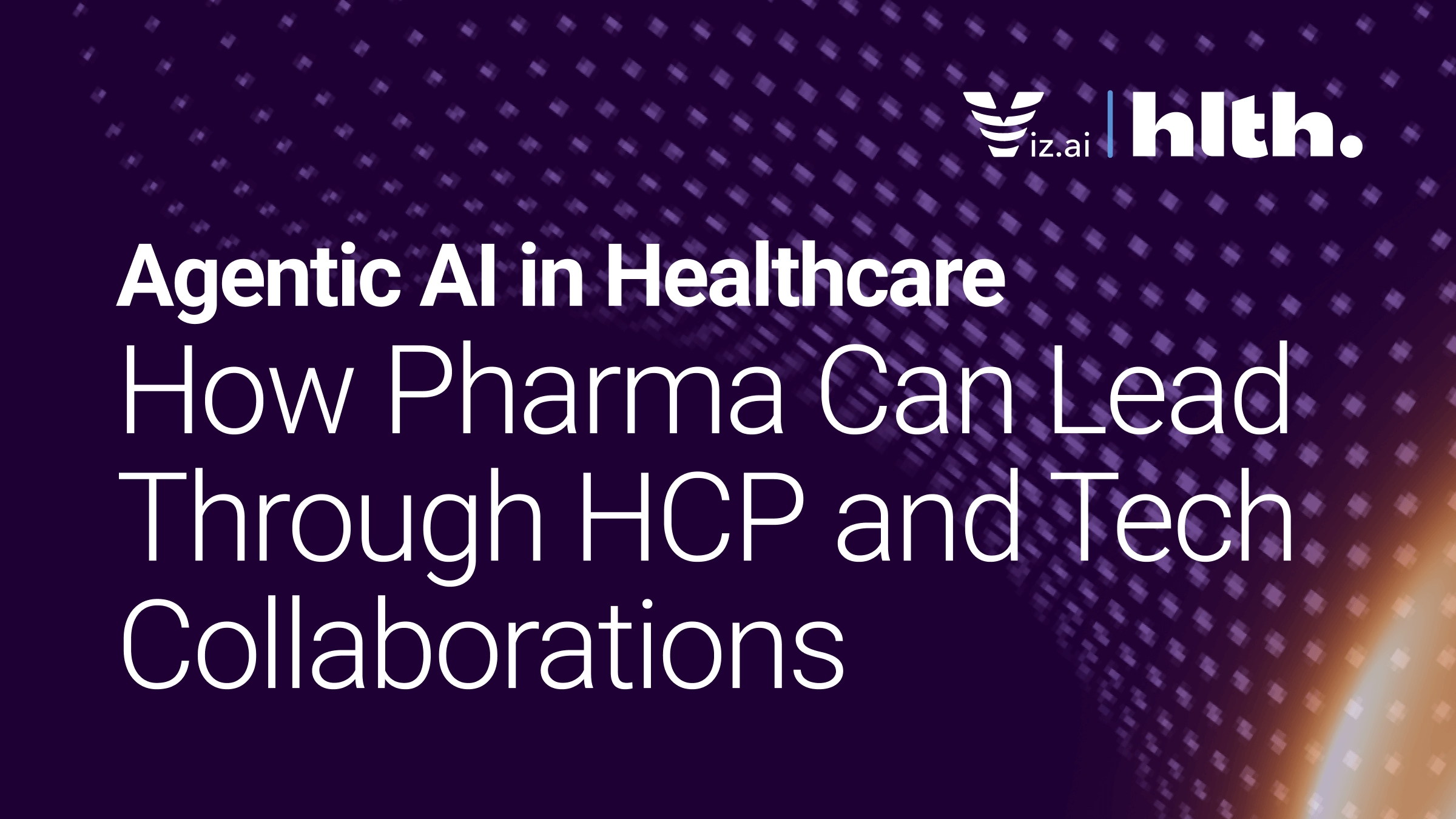
HLTH Report: Agentic AI in Healthcare
How Pharma Can Lead Through HCP and Tech Collaborations
Jun 17, 2025
Jun 18, 2025

At the May 2025 AI Vizionaries Summit, hosted by Viz.ai and HLTH Community, leaders from pharma, health systems, and tech came together to unpack how agentic AI is—and already is—making healthcare unrecognizable.
Below are a few key takeaways from the AI Vizionaries Summit, spotlighting the trends and opportunities defining this next chapter:
AI in healthcare is no longer theoretical. It’s happening — now. In just one year, adoption among HCPs has nearly doubled: 66% report using AI as of 2024, up from 38% in 2023 (AMA Augmented Intelligence Research, Feb 2025).
This surge signals more than interest — it’s a clear shift toward widespread integration. Healthcare is entering its AI era,—and HCPs are welcoming the change.
“Healthcare AI can help HCPs improve patient diagnosis, optimize monitoring, and deliver contextualized insights—driving better outcomes, richer data, and stronger support for healthcare stakeholders.”
— Suhas Krishna, VP, Bristol Myers Squibb
What’s driving this shift in HCP AI adoption?
Today’s scale of care delivery and strain on healthcare systems is unprecedented: 44 million patient encounters occur each year in the U.S., with nearly 40,000 daily hospitalizations. Health systems are under extraordinary pressure — stretched by workforce shortages, growing chronic disease burdens, and operational complexity.
These challenges are fueling demand for AI solutions that can:
Where early pilots once focused narrowly on optimization, health systems are now scaling AI strategically — deploying enterprise-wide systems designed to deliver consistency, reliability, and measurable outcomes.
Agentic AI refers to intelligent systems that proactively support clinical decisions, coordinate care, and adapt in real time. These tools aren’t theoretical — they’re already embedded in diagnostic workflows, EHRs, and therapeutic decision-making. And they’re changing how care is delivered.
HCPs need real-time access to therapeutic information, which is often lacking. AI can bridge this gap by ensuring the right treatment reaches the right patient at the right time. — Eunice Youhanna, AI Healthcare & Life Sciences Advisory, Microsoft
For pharma, this shift presents both urgency and opportunity..
As these agents shape the decisions HCPs make, traditional commercial models risk being outpaced by the technology guiding clinical action in the moment.
But there’s also an opportunity for pharma to act as a partner in delivering high-value, AI-enabled care.
In this new environment, digital capabilities can no longer be bolted on. They must be built in — especially during launch. With treatment journeys growing more complex, even the most innovative therapies can face adoption hurdles — from diagnostic ambiguity to workflow integration challenges.
By launching AI-powered tools alongside new medications, pharma can deliver personalized, real-time support that helps HCPs navigate intricate care pathways more effectively. This approach not only aligns with the evolving needs of providers, but also positions pharma as a proactive partner in improving patient outcomes — not just a supplier of therapy.
The benefits are twofold:
Agentic AI enables earlier patient identification by continuously scanning clinical data to surface high-risk individuals—even in non-specialist settings. Once patients are flagged, agents recommend next-best actions in real time, reducing delays between diagnosis and treatment. For pharma, this means therapies are integrated directly into care decisions, helping patients access the right intervention faster.
“Pharma commercial strategies must continue to evolve by strategically applying AI in the highest impact areas… The therapies we’re bringing to market are getting more and more innovative, and they will only reach their full potential by accelerating complementary tech innovations that help HCPs and patients navigate diagnosis and new treatment modalities.”
— Troy Sarich, Chief Commercial Data Science Officer, Johnson & Johnson
The takeaway from this year’s AI Vizionaries Summit is clear:
Agentic AI isn’t coming — it’s here.
Pharma leaders who recognize this shift — and build the right partnerships now — will shape not only the next era of engagement, but the next standard of care.